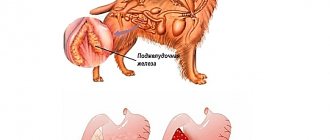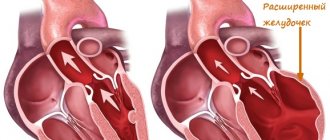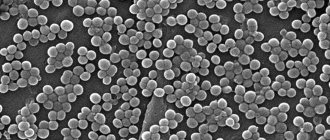Kidney failure in dogs refers to problems with the kidneys. At the same time, their excretory ability decreases or completely stops, and various harmful and toxic substances begin to accumulate in the body, affecting the general health of the dog. At an early stage, this pathology is practically not detected, because Rarely does an owner check a pet’s blood and urine at diagnostic intervals.
Dogs over 5 years of age are at risk for developing various kidney pathologies. This does not take into account various damaging factors at an earlier age.
Dog breeds predisposed to kidney pathologies
- Samoyed dogs;
- German Shepherds;
- Shar-Pei;
- bull terriers;
- Shih Tzu;
- English cocker spaniels;
- golden retrievers.
In renal failure, the destruction of kidney tissue usually occurs, and the remaining cells bear an increased burden of general excretory function. Kidney cells and tissues are not restored, so the loss of function of this organ is obvious. When regularly taking blood and urine tests, you need to pay special attention to the upper limits of normal indicators - this may be a signal that there is a predisposition to kidney failure. Why is it important to get tested? Because outwardly this pathology begins to manifest itself already when 50-70% of the kidneys are affected. In this condition, cure is impossible; you can only organize periodic or regular maintenance therapy.
Pathology occurs in two forms:
- acute;
- chronic.
Causes of kidney dysfunction in dogs
Functional (deep and purulent tissue damage)
- pyelonephritis;
- glomerulonephritis;
- toxic damage.
Genetic diseases:
- amyloidosis (disorder of protein metabolism and protein deposition in kidney tissue);
- polycystic disease (formation of “sacs” with fluid in the kidney cavity).
Infectious and blood parasitic diseases
- viral diseases;
- piroplasmosis;
- hemobartenellosis;
- leptospirosis.
Accompanying illnesses
- urolithiasis (formation of salt stones in the kidneys);
- interstitial nephritis (inflammation of the kidneys of a non-bacterial nature);
- underdevelopment of the kidneys.
Types, forms and stages
Kidney failure occurs:
- spicy. Nephron damage develops under the influence of a complex of negative factors that cause the rapid development of negative symptoms. With timely selection of therapy, cleansing the body, removing toxins, treating parasitic and bacterial infections, normalizing the water-salt balance, the functions of the bean-shaped organs are quickly restored,
- chronic. The pathology slowly develops against the background of various types of kidney damage or with improper, untimely or insufficient treatment of the acute form of PN. Often problems with the bean-shaped organs occur in older dogs. It is impossible to completely cure chronic renal failure; the owner, when interacting with a veterinarian, can only normalize the pet’s quality of life and reduce the risk of possible complications due to poor kidney function.
Classification of renal failure:
- renal variety. The cause of damage to the kidney tissue is the effect of toxins, viruses, bacteria directly on the tissue of the bean-shaped organs,
- prerenal view. Nephron damage develops when there is poor blood supply to the kidneys or improper blood circulation in the bean-shaped organs. Prerenal type of PN often develops with unprofessional use of general anesthesia,
- postrenal view. The negative process affects the kidneys in older animals. Provoking factors: parasitic infections, accumulation of kidney stones, blockage of the urinary tract.
Stages of development of renal failure:
- stage of compensation in the absence of symptoms, but changes in urine tests,
- latent period. Signs of pathology are weak, ultrasound shows enlarged kidneys,
- stage of decompensation. The symptoms are pronounced, the functioning of the excretory system is significantly impaired, urine and blood tests confirm the diagnosis,
- terminal stage. The nephrons die, the bean-shaped organs almost do not function, coma and death of the dog are possible.
Signs, symptoms
It should be repeated that insufficient kidney function is an insidious pathology that begins to manifest itself externally even when the original state of the kidneys can no longer be returned. Given the natural general good health of dogs, kidney failure may begin to manifest itself clinically when one kidney fails completely and the other is one-third damaged. Symptoms can appear several at a time, or some individually. You need to be attentive to the condition of your pet.
What are the main symptoms of kidney failure in dogs? First of all, the dog stops being active, lies down more, looks tired and depressed. The amount of urine produced may increase sharply due to the body's loss of ability to retain and absorb fluid. At the same time, the urge to go to the toilet becomes more frequent up to 6-8 times. Such symptoms definitely lead to dehydration and constant thirst. After this, the amount of urine decreases sharply and disappears completely.
The dog's weight decreases due to lack of appetite, periodic vomiting and diarrhea. The mucous membranes become pale, the pulse may increase (normally 70-120 heartbeats) and swelling may appear, starting from the bottom of the paws. In extreme cases, muscle tremors and inflammation in the mouth are added, up to the appearance of ulcers.
A dog can be considered to be in a very bad state when regular convulsions, extensive ulcerative stomatitis, vomiting of undigested food and complete apathy appear. Most often, after this, the dog dies in a short time through a coma.
Causes of the disease
Acute renal failure develops quickly, within a few hours, or at most days, and this type of kidney damage is often (but not always) reversible. Animals of any age get sick.
- Acute renal failure in a dog can be caused by:
- poisoning (for example, ethylene glycol);
- infections (leptospirosis) and invasions (pyroplasmosis);
- sepsis;
- dehydration;
- extensive blood loss (“shock kidney”);
- violation of the outflow of urine (blockage of the urethra or ureters), etc.
Acute form (API)
This form of the disease is characterized by an extremely rapid rate of development and manifestation of clinical signs. In dogs, acute renal failure is a potentially treatable pathology if only the diagnosis was made in a timely manner. Compensatory therapy can bring the kidneys to a state of maximum performance, to the extent possible in this particular case. The situation is usually complicated by the fact that the primary acute course is very rare; basically, it is an exacerbation of the chronic course, which causes the main harm to the kidneys. It is secondary acute renal failure that is considered incurable.
The main causes of severe renal impairment include:
- various types of poisoning with highly toxic substances (for example, ethylene glycol or heavy metals);
- parasites (pyroplasmosis) and infections (leptospirosis);
- severe dehydration of the body, regardless of its causes;
- sepsis (bacterial blood infection);
- states of shock (for example, with sudden intense blood loss);
- mechanical blockage of the urinary ducts, which disrupts the normal outflow of urine.
Depending on the main causes provoking acute renal failure, the pathology is divided into 3 main types:
- Prerenal (or prerenal). This type appears due to a sharp drop in blood pressure in the kidneys, which disrupts renal blood flow (bleeding, dehydration, heat stroke, etc.).
- Renal (or renal). The condition develops with direct damage to the tissues and cells of the kidneys due to glomerulonephritis, pyelonephritis, drug poisoning, exposure to snake venom, accelerated breakdown of red blood cells and blockage of tubules with hemoglobin, etc.
- Postrenal (or postrenal). The main role in this type of pathology is played by mechanical effects on the urinary tract - narrowing of the lumen from compression or complete blockage, for example, by urinary stones. It may be due to tumor processes, urolithiasis or enlarged prostate gland in males.
What signs does it show externally?
In acute cases, there is always a clinic, which is distinguished by the clarity of its manifestation. There may be many symptoms at once and obvious, or there may be one or two and blurred:
the dog suddenly becomes depressed - a pet that is frisky in the morning may “go out” by the evening;- urination becomes more frequent and the amount of urine excreted increases sharply (which may then decrease as the disease progresses);
- muscle weakness - the dog tries to get up and walk, but does it with great difficulty on shaking legs;
- appetite disappears, the dog may not even respond to his favorite treats;
- the pulse quickens, the mucous membranes may turn pale, or may become excessively red;
- swelling of the paws appears, which can spread to the chest and subcutaneous area of the abdomen;
- depending on the reasons that caused the pathology, body temperature may rise or fall;
- ulcers appear in the mouth, especially often along the edge of the tongue;
- symptoms can develop very quickly, leading the pet to a coma (outwardly it will seem that the dog has died, but there will be barely noticeable respiratory activity and rigor mortis will not occur).
What can be seen from the analyzes
- the levels of sugar, phosphorus, creatinine and urea will definitely rise in the blood;
- protein and sugar will go off scale in the urine, its specific gravity will decrease, red blood cells, leukocytes and renal epithelial cells will be detected.
You need to immediately take your dog to the veterinarian for help, because... the animal may die.
What is kidney failure in dogs?
Renal failure is a lesion that leads to disruption of the excretory, biosynthetic and regulatory functions of the kidneys. As a result, toxic substances accumulate in the body, and water, electrolyte, nitrogen and other types of metabolism are disrupted. Such an imbalance adversely affects the functioning of all organs and systems, leading to multiple organ failure.
With the development of pathology, the death of kidney cells - nephrons - occurs. These structures cannot be restored, unlike, for example, liver cells. The animal’s body compensates for the violations for a long time, so the first signs of a dangerous disease are invisible to the owner. After the kidney is destroyed by more than 75%, the pet’s condition deteriorates sharply.
Gender has not been identified in renal failure. The pathology is more often noted in older dogs, but due to a number of factors, the disease develops in young animals and even in puppies up to one year old.
Forms of the disease
According to the nature of the course, pathology is divided into two types: acute and chronic.
► The acute form is characterized by rapid impairment of renal function and is accompanied by a severe clinical picture. It is always a consequence of some concomitant pathology.
Depending on the location of the problem that led to acute kidney damage, the following types of pathology are distinguished:
- Prerenal. Associated with a violation of general blood flow, as a result of which the blood supply to all renal structures deteriorates. It may be accompanied by a complete absence of urination in the pet. In fact, the structure of the kidney itself is not damaged in this type of pathology. But due to impaired blood flow, the organ does not perform its functions. At the initial stage, this is a reversible deviation. However, if measures are not taken in time, it can lead to severe kidney failure.
- Renal. Associated with damage to the kidney tubules. In most cases, these are ischemic or toxic damage (with the formation of an area of necrosis). It may also be accompanied by inflammation of the kidney tissue (nephritis, glomerulonephritis). The renal stage occurs when poisoning is caused by poisons, drugs, prolonged exposure to anesthesia, and the like.
- Postrenal. Caused by restriction of urine excretion in any part of the excretory system. The kidneys are functioning, but urine is not being produced due to urinary tract obstruction. The postrenal stage can turn into the renal stage, since due to a violation of the outflow of urine, the renal pelvis fills with fluid and compresses the tissue of the organ, leading to ischemia (deterioration of blood supply). Possible reasons for the development of the postrenal form: tumors, stone obstruction, hematoma, etc.
► Chronic renal failure is characterized by progressive structural damage to the kidneys. During the course of the disease, obvious symptoms do not appear immediately and alternate with periods of remission, during which the kidneys continue to function at the same level.
One of the first signs of chronic renal failure in dogs is azotemia - the accumulation of non-protein nitrogenous substances (creatinine and urea) in the blood.
Depending on the concentration of creatinine in the blood, in veterinary medicine the following stages of chronic kidney disease are distinguished:
- Stage 1 - non-azotemic (creatinine concentration up to 125 µmol/l).
- Stage 2 - mild renal azotemia (125-179 µmol/l). The first two stages are asymptomatic.
- Stage 3 - moderate (creatinine level 180-439 µmol/l). The first clinical signs begin to appear. It is during this period that owners most often pay attention to the deterioration of the pet’s general condition.
- Stage 4 - severe (terminal), the concentration of creatinine in the blood is more than 440 µmol/l. The animal is in a serious, irreversible condition.
Chronic form (CRF)
Most often develops in old dogs, over 6 years old. Sometimes the kidneys begin to work worse, regardless of the influence of any factors. The main reason for the development of chronic renal failure usually remains unidentified unless an autopsy is performed.
The causes of chronic deficiency in young dogs are considered to be
- previously formed surge arrester;
- genetic predisposition to kidney pathologies;
- any primary chronic kidney disease.
As nephrons (kidney cells) gradually die, their functions are successfully taken over by the remaining unaffected cells. That is why, with chronic renal failure, external symptoms begin to appear very slowly and when most of the kidneys are damaged and cannot be restored.
What becomes noticeable
the dog becomes weak and lethargic;- when urinating, there is very little urine or only the urge remains;
- severe thirst - the animal drinks almost constantly (normally, a dog needs water per day at the rate of 50 ml/kg of live weight);
- there are signs of dehydration - dull fur, dry mucous membranes, viscous saliva;
- a sharp smell of ammonia is felt from the mouth;
- body temperature drops below normal - to 37°C, and the number of heart contractions also decreases (bradycardia, rate less than 60 beats/min);
- Possibility of gagging or direct vomiting of undigested food;
- swelling may occur (although not necessarily).
What can be seen in the analyzes
- increase in blood creatinine and urea;
- signs of anemia in the blood;
- a high content of protein and sugar is detected in the urine, and a drop in specific gravity is noted. There will be no sediment, as with acute renal failure.
Symptoms
In chronic renal failure, symptoms may be vague or completely absent. The disease occurs in several stages; the longer there is no treatment, the more irreversible the processes occur in the animal’s body.
Stages of development of chronic renal failure and their symptoms:
- The initial stage - from time to time the animal becomes lethargic, sleeps a lot, and refuses to eat. In this case, only urine and blood tests can indicate the presence of a problem.
- Stage of compensated insufficiency - the dog drinks a lot, as a result of which the volume of fluid released during urination increases. By increasing the amount of urine, the kidneys manage to cleanse the blood of toxins. During this phase, the animal’s physical activity remains normal.
- Decompensation phase - the animal’s health condition worsens, its motor activity decreases and its weight decreases. Urination is frequent, false urges appear. The pet refuses food, vomiting and diarrhea occur. In addition, during this phase the dog’s vision may deteriorate and an unpleasant odor may appear from the mouth. When conducting urine tests, an excess of red blood cells is detected in it.
- The terminal stage is a significant deterioration in the condition of the body and all its systems. At this stage, heart rhythm disturbances, anemia, softening of bone tissue, problems with the gastrointestinal tract, neurological disorders, shock, and coma are observed. The combination of these symptoms leads to death.
Signs of acute renal failure develop rapidly. As a rule, this disease manifests itself after the illness that caused it has been cured.
Symptoms of acute kidney failure in dogs:
- The blood test shows a slight deviation from the norm;
- Increased urination;
- Reducing the amount of fluid released;
- The dog is weakened, does not show interest in communication and games;
- Lack of appetite in the animal, nausea and vomiting;
- Diarrhea;
- The presence of the smell of acetone from the dog’s mouth;
- There is a slight decrease in the pet's body temperature.
If your pet exhibits symptoms of acute renal failure, you must contact your veterinarian to prescribe the correct therapeutic measures. The duration of treatment, started in a timely manner, is 6-12 months.
Diagnostics
To diagnose the disease, the veterinarian conducts a conversation with the owner and studies the symptoms of the disease according to the dog’s owner. After this, a careful visual examination of the condition of the body, mucous membranes, and palpation of the animal’s internal organs is carried out.
Other methods for diagnosing acute renal failure and chronic renal failure:
- Blood analysis;
- Analysis of urine;
- Radiography;
- Ultrasound of internal organs.
- Diagnostics to determine the form of renal failure: chronic or acute.
Based on the results of the examination, the veterinarian prescribes treatment. The use of medications without a prescription from a specialist is not recommended in this case.
Diagnostics
The diagnosis is made strictly comprehensively based on:
- survey of owners about the condition and lifestyle of the dog (history);
- clinical examination by a doctor;
- laboratory tests of urine and blood (the most important diagnostic components);
- Ultrasound or radiography (used to determine postrenal pathologies).
The most important criteria for making a diagnosis
- fluctuation in the amount of urine when urinating in any direction and obvious thirst;
- external exhaustion and weakness;
- an increase in creatinine, urea, phosphorus in the blood and an increase in its general acidity;
- a sharp jump in the level of protein and sugar (glucose) in the urine.
What can be seen on an ultrasound
- in the acute form of renal pathology, the kidneys will be of normal size or enlarged;
- in chronic renal failure, the kidneys will be significantly reduced.
Treatment of chronic renal failure
The earlier the development of chronic renal failure in a dog is detected, the more effective and simpler the treatment.
It is impossible to cure chronic renal failure, but you can slow down its development, providing your pet with many more years of active life.
Diet plays an important role. Currently, ready-made foods have been developed that are specifically designed for animals with diseased kidneys.
If necessary, the animal is prescribed medications to control blood pressure; to protect the mucous membrane of the gastrointestinal tract; adsorbents that promote the removal of metabolic products through the intestines, and others.
It is also vital for the dog to get enough fluids - and this is the owner's concern. If your dog doesn't drink much, you can add water to the food. Sometimes you have to force the animal to drink, or inject liquid subcutaneously
Treatment of chronic insufficiency is long-term, most often lifelong. Regular examination of the dog will allow you to adjust the prescription depending on the condition of the body. The dog's life expectancy depends on compliance with the doctor's recommendations.
Prevention of kidney disease in dogs
It is impossible to 100% prevent the development of kidney pathologies in dogs, because, unlike cats, there are many more causes that provoke this condition. The main emphasis is on annual medical examination (preventive examination by a veterinarian) for young dogs and every six months for old dogs. In this case, it is necessary to take blood and urine tests, as well as do an ultrasound of the abdominal organs. With this approach, it is possible to identify not only the very beginning of renal failure, which can still be cured, but also even determine a predisposition to it.
Also, an important preventive measure for dogs is timely vaccination and antiparasitic treatments, because In this type of animal, kidney pathologies can be provoked not only by infections, but also by parasites.
You should also ensure that your pet does not come into contact with any toxic or poisonous substances, including household chemicals.
Kidney failure in dogs: symptoms and first signs
How the disease manifests itself depends on the form of the pathology and the presence of the underlying problem. Characteristic signs of acute course:
- Decreased amount of urine or absence of urination.
- Increased thirst.
- No appetite.
- Vomit.
- The color of urine, as a rule, becomes rich (from dark yellow to brown).
- Pallor of visible mucous membranes.
- Convulsions may begin.
The chronic form is asymptomatic at the initial stage. The first signs appear when kidney function is already significantly impaired. At this stage note:
- Polyuria, the duration of which depends on the stage of kidney failure in the dog, then urine production decreases as the organ is damaged.
- Dehydration.
- The coat becomes dull and dandruff appears.
- The pet notices weakness, drowsiness, and depression.
- Bad breath (strong smell of urea).
- Vomit.
- Animals develop uremic syndrome. Stomatitis appears in the oral cavity, and gastritis and ulcers appear in the digestive system. Nervous disorders due to poisoning by uremic toxins are detected.
Food for dogs with kidney failure
Treatment of any form of renal failure must be accompanied by an appropriate diet. You can feed both your own developed diet and ready-made commercially produced food created specifically for dogs with kidney problems.
Self-feeding should be based on the following rules:
- Moderate to high fat foods. With kidney failure, dogs lack energy, which can easily be replenished by fats. They are not difficult to digest for a weakened body. Saturated fats are found in butter, fatty meats, egg yolks and full-fat yogurts. Vegetable oils are not recommended for kidney pathologies. Homemade diets should be saturated with fats gradually, because... if you give a lot of fatty foods at once, it will provoke upset stools and cause diarrhea.
- Protein foods are acceptable, but in limited quantities and with high quality protein. Experts still do not recommend completely eliminating protein from the diet. Yolks, in addition to fats, contain phosphorus, the amount of which must be reduced in case of renal failure. It is better to give the dog a mixture of 1 whole egg with one white of the second (i.e. there will be 2 whites and 1 yolk). You can also add finely ground shells, which will also inhibit the excessive absorption of phosphorus. Calculation: 1 gram of ground shells per 0.5 kg of any food. An ideal source of easily digestible protein that is low in phosphorus is green beef tripe.
- A small amount of carbohydrates with a low amount of phosphorus. Carbohydrates provide calories and nutrients without increasing phosphorus levels. For these purposes, steamed vegetables (white potatoes and yams), round rice (contains the least phosphorus), and semolina are used in the diet.
- Reduce the amount of salt you consume.
- Drink only clean, filtered water in sufficient quantities (hard water contains minerals that put stress on the kidneys).
- Dogs often experience decreased or completely lost appetite. It is necessary to note those products whose smell provokes the animal to consume food.
- Among the additives allowed to be added to food, you can give: salmon oil (not fish oil, but oil) – 1 g/5 kg of weight;
- coenzyme Q10 – 15 mg/10 kg of weight three times a day;
- vitamin B in any form;
- vitamin E – 50 IU/10 kg of weight;
- vitamin C (do not abuse) – 500 mg/20-22 kg of animal weight;
- categorically exclude multivitamin complexes that may contain vitamin D and phosphorus.
Examples of diets for an adult dog weighing 20 kg (for one meal):
- 200 g semolina porridge with 2 tbsp. heavy cream and 1 tbsp. l. Melted butter; + 200 g chicken meat (red, because it contains less phosphorus);
- + 50 g beef fat and finely chopped chicken skin;
- + 70 g of any permitted vitamin and mineral supplements.
- + 200 g of any fatty red meat;
- + 1 egg white;
Important: a dog can be switched to a regular diet only in case of acute renal failure and only when blood and urine tests are normalized. With chronic renal failure, a special diet will accompany you for the rest of your life!
If it is not possible to prepare special medicinal food for your dog, you can resort to special ready-made food, balanced with all the necessary nutrients and designed specifically for dogs with kidney failure.
- Renal RF14 (RF16) TM Royal Canin (≈1200 rub./2 kg of dry food, 4000 rub./14 kg) – for dogs with chronic renal pathology. Lifetime use is allowed. Do not feed pregnant women, those with problems in the pancreas or those with lipid metabolism disorders.
- Renal Special TM Royal Canin (≈200 rubles/410 g of wet food in canned containers) – for dogs with acute renal failure and chronic renal failure. The food belongs to the medicinal group. Used for 2-4 weeks for acute disease and up to 6 months for chronic disease. Prior approval from a veterinarian is required. Do not give to puppies with pancreatitis or fat metabolism disorders.
- Hills Prescription Diet Canine k/d (≈275 RUR/370 g canned wet food, 1400 RUR/2 kg dry) – therapeutic and preventive food for dogs with any form of renal failure.
- Hills Prescription Diet Canine u/d (≈250 rub./370 g canned “wet” food, 1250 rub./2 kg dry) – medicinal food used for severe forms of kidney dysfunction, which is not only easily digestible, but it also additionally removes from the body some toxic substances that the kidneys cannot cope with.
- Purina Veterinary Diets NF Kidney Function® Canine Formula (≈150 RUR/400 g wet food, 1250 RUR/2 kg dry) is a special medicinal food for dogs with any kidney pathologies.
- Eukanuba Renal (≈5000 rub./12 kg of dry food) is a therapeutic and dietary food used for feeding dogs with any form of renal failure. Do not use in puppies during the period of active growth, as well as in bitches during pregnancy and nursing puppies.
- Happy Dog Diet Kidneys (≈950 RUR/2.5 kg of dry food or 2400 RUR/7.5 kg) is a comprehensive food for dogs with pathologies of the kidneys, heart and liver.
- Farmina Vet Life Canine Renal (≈1,400 rub./2.5 kg or 4,900 rub./12 kg of dry food) is a balanced food for dogs with acute renal failure or chronic renal failure. The food is medicinal, designed for a limited course of use: 2-4 weeks for acute renal failure and up to 6 months. with chronic renal failure.
How to help a dog with kidney problems
Before starting treatment for kidney failure, the disease should be correctly diagnosed.
Symptoms of PN can easily be confused with signs of diabetes mellitus/diabetes insipidus or Cushing's syndrome. In a clinical setting, a doctor will require blood and urine samples to determine the disease, measure the animal’s blood pressure, perform an ultrasound and, if necessary, an x-ray. Treatment of kidney failure in dogs involves the use of the following:
- Administration of solutions to relieve intoxication (saline solution, Ringer's solution, etc.);
- The use of antibiotics if PN is caused by a bacterial nature (for example, pyelonephritis or pyometra);
- Carrying out intestinal and peritoneal dialysis to cleanse the body of toxins;
- Hemodialysis and plasmapheresis for blood purification;
- Administration of hepatoprotectors to support the liver;
- Taking heart medications;
- Taking probiotics to normalize digestion;
- Taking antiemetic and antidiarrheal medications;
- Introduction of vitamins.
Treatment of kidney failure
Treatment of acute renal failure and chronic renal failure in dogs is carried out with approximately the same drugs, with the only difference that in acute pathology it is important to first eliminate the influence of the provoking factor, and in a chronic course - to support the animal’s exhausted vitality.
Important: combinations and sequence of drug administration are determined exclusively by a veterinary specialist! Self-medication is strictly prohibited!
If an acute process is diagnosed early, the dog must be treated. Chronic renal failure is considered an incurable pathology, treatment procedures for which help put the body into a state of compensation, significantly prolonging the relatively normal life of the dog for a long time. In this case, most often, treatment and maintenance therapy for chronic renal failure will remain until the end of the pet’s life.
If the cause of renal failure is congenital underdevelopment or any genetic pathology, then it is impossible to completely restore the function of the kidney/kidneys. Only symptomatic therapy is provided.
- Intensive drip treatment of renal failure is prescribed, aimed at restoring not only water balance, but also electrolyte and acid-base balance. Also, through droppers, you can remove the maximum amount of toxic substances that the kidneys cannot deal with directly. It is important to administer the solutions warm so as not to aggravate the condition of a dog with a low body temperature.
- Drugs are prescribed that relieve gagging, improve blood counts, normalize biochemical levels in the blood, and eliminate anemia, which is a natural accompaniment of chronic renal failure.
- You may need careful antibiotic therapy for purulent lesions (the course and duration is determined by the final urine test).
- Urination is normalized with the help of diuretics and mechanical diversion of urine when the bladder is full (urine is removed using a catheter or surgery if there is a mechanical blockage).
- During the acute stage, blood and urine tests are regularly done to monitor the dynamics of the disease or recovery. Ideally, the dog should be left in a hospital during this period.
- Systemic glucocorticoid therapy to restore water balance and suppress immune responses in autoimmune glomerulonephritis.
- In cases of urgent need, drugs are administered that lower blood pressure (in the event of the development of renal hypertension - high blood pressure due to impaired kidney function) and normalize the passage of blood through the kidneys.
- There may be a need for drugs that protect the mucous membranes of the gastrointestinal tract and reduce overall acidity in the stomach.
- If the condition worsens, hemo- and peritoneal dialysis and plasmapheresis are possible.
- Tube feeding or parenteral nutrition may be possible if vomiting persists.
- Strictly monitor the level of phosphorus in the blood, using drugs that bind and remove its free fractions.
Treatment
The main thing that the owner should do at the slightest suspicion of acute renal failure of his pet is to immediately take him to the doctor! With every hour of delay, hopes for restoring kidney function become less and less. Acute renal failure requires intensive therapy with constant monitoring of the dog’s condition and all physiological parameters, so the best solution would be to place the pet in a hospital.
It is necessary to carry out infusion therapy, control the formation of urine, correct the electrolyte balance and acid-base balance of the blood.
In some cases, the use of extracorporeal blood purification is indicated (lost kidney function is temporarily replaced using special therapy methods) - procedures such as hemodialysis or peritoneal dialysis are performed.
With timely treatment, normal kidney function can be almost completely restored.
List of medications for renal failure
Restorative and rehydrating solutions for infusion
- Ringer-Locke solution with glucose 40%: up to 20 ml/kg of dog’s weight intravenously (under monitoring potassium levels);
- rheosorbilact: 200-400 ml with a dropper once a day (under monitoring the level of potassium in the blood);
- Nelit: 50 ml/kg of animal weight for self-drinking or through a tube;
- recovery cocktails with saline, glucose and ascorbic acid: up to 100 ml/kg (depending on the severity of the condition) intravenously once a day.
Diuretics
- Lasix (furosemide): 0.1 ml/kg twice daily into the muscle. If there is no effect, the dose can be increased 2-4 times (with the correct dosage, the effect appears within 30-60 minutes);
- mannitol (mannitol): 1-1.5 g/kg body weight into a vein by slow infusion or with a dropper;
- Lespenefril: 0.5-1 tsp, and in severe cases up to 2-3 tsp. with water orally before meals every other day for a course of 3-4 weeks. Repetition is allowed after a 2-week break.
Protecting the gastrointestinal tract
- omez (omeprazole): orally 0.5-1.5 mg/kg body weight daily symptomatically, but not longer than 2 months;
- Zantac (ranitidine): subcutaneously or slowly intravenously at a dose of 2 mg/kg or orally at 3.5 mg/kg twice a day at regular intervals (12 hours).
Antiemetics
- papaverine: 0.03-0.12 g per animal symptomatically;
- Cerucal (metoclopramide): 0.5-0.7 ml/kg up to three times a day as needed, no longer than a week;
- Serenia (for dogs only): subcutaneously at a dose of 1-2 ml/kg symptomatically.
Antihypertensive drugs
- enalapril: the maximum effective dose is 0.5 mg/kg, but there should be a gradual approach to it, starting first with 1/3-1/4 dose, depending on the general condition of the dog and the level of hypertension;
- Vazosan (ramipril): the dose is selected individually, starting from 0.125 mg/kg (maximum 0.25 mg/kg) – once a day orally on an empty stomach.
Antianemic and normalizing hematopoietic agents
- vitamin B12: 250-1000 mcg/kg (depending on the size of the dog). Administered subcutaneously or intramuscularly. The frequency of administration and duration of the course depend on the patient’s condition;
- Recormon: 500-1000 units/10 kg of dog’s body weight every other day intramuscularly;
- anti-anemic iron complex - 0.8 ml/10 kg of weight intramuscularly into the thigh or neck area twice with an interval of two days between injections;
- hemobalance: 0.25-1 ml of the drug, depending on the weight of the dog, into the muscle or intravenously twice a week;
- Ursoferan: once subcutaneously or intramuscularly in a dose of 0.5-1 ml per head.
Renoprotectors
- Canephron: for small individuals, 5-10 drops orally, for medium-sized individuals - 10-15, for large individuals - up to 25, 1-2 times a day for a course of up to 1 month. Can be repeated after some break. A drug from a human pharmacy.
Sorbents and antitoxic agents
- Lactusan: individual dosage with a maximum dose of 50 ml per dog every day. Can be taken for life;
- enterosgel: 1-2 tbsp. gel is diluted with water and poured into the dog’s mouth
- sirepar: intravenously or slowly injected into the muscle 2-4 ml once a day until signs of intoxication disappear.
To maintain heart activity
- Riboxin: up to 10 mg/kg into the muscle twice a day at regular intervals for 1.5-2 weeks;
- cocarboxylase: 0.5-1 g per day for 5, 14 or 30 days. Inject into the muscle or intravenously with droppers;
- sulfcamphocaine: single dose - 2 ml intramuscularly or into a vein. It can be administered up to 3 times a day for a month, depending on the severity of the dog’s condition.
Antibiotics
- ciprofloxacin: 0.2 ml/kg into the muscle once a day (the dosage can be divided into two injections) for 5-10 days;
- enrofloxacin: 5-10 mg per kg of live weight 1 time per day for 5-7 days.
Glucocorticoid hormones
- dexamethasone: 0.5-1 ml intramuscularly or along with a slow drip;
- prednisolone: the usual dosage is 1 ml/kg of dog's weight twice a day for 2 weeks. With positive dynamics of treatment, the dosage is slowly reduced. It is prohibited to abruptly cancel or reduce the dose in dogs!
- Metypred (methylprednisolone): 1-2 mg/kg twice daily for up to 2 weeks. If it is more than two weeks, then discontinuation should be carried out through a gradual dose reduction.
Phosphorus binders
- ipakitine: 1 g of powder (1 dispensing spoon)/5 kg of dog’s body weight is mixed with food and given twice a day. The course is long - 3-6 months;
- almagel: 1 ml/5-10 kg of weight up to 4 times a day strictly before meals 30 minutes for a course of up to 1 month. If the phosphorus level remains high, the drug should be replaced with another one;
- Renalcin: 5 ml/10 kg of dog’s weight per day until the condition returns to normal and longer. The daily dose can be divided into several doses.
Hemostatic agents
- Vikasol: once a day, 1-2 mg/kg intramuscularly for a maximum of 5 days;
- dicinone (etamsylate): intramuscular 10-12 mg/kg; if taken orally, the dosage is doubled and taken up to 4 times a day.











